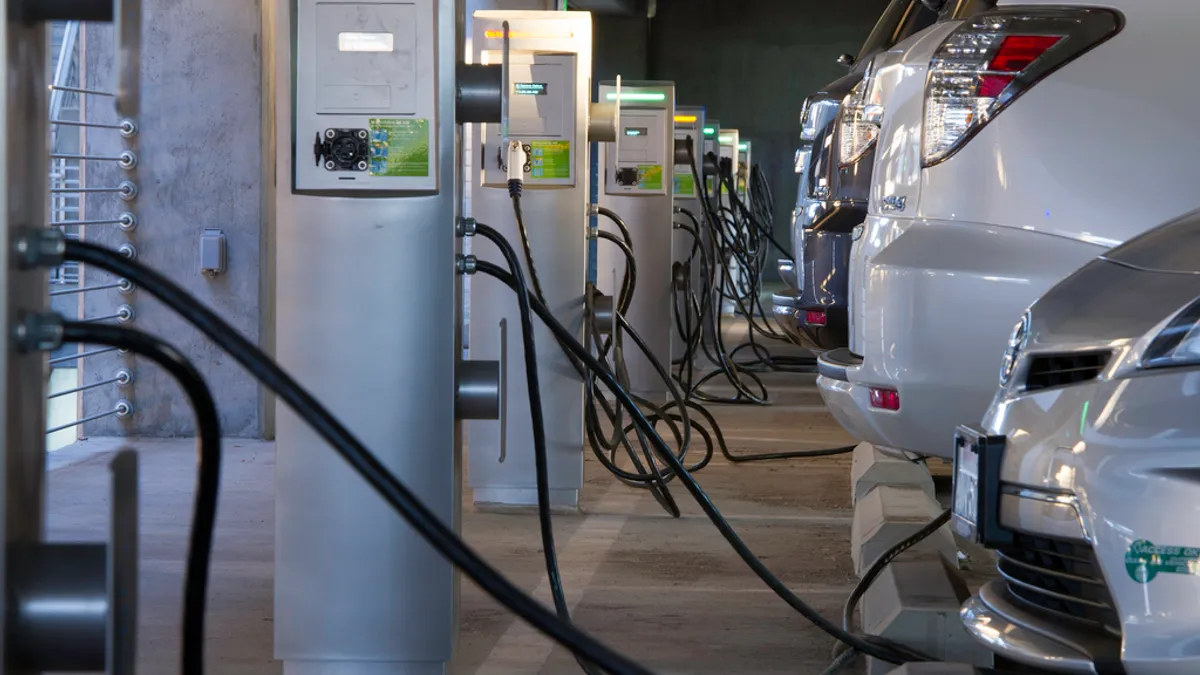Dive Brief:
- Pacific Gas & Electric yesterday announced it was launching a new EV Charge Network program to partner with businesses and charging companies to install 7,500 level 2 chargers across Northern and Central California, including at sites in disadvantaged communities.
- The charging ports will be rolled out to condominiums, apartment buildings and workplaces. In this year's first quarter, the utility will begin installing new chargers, including at Merced College, the first participating customer.
- In an effort to meet aggressive greenhouse gas reduction goals, California wants to have 1.5 million zero-emission vehicles on the road by 2025.
Dive Insight:
As California works to get more electric vehicles on its roads, utilities are moving to address the typical chicken-egg conundrum: rolling out additional charging infrastructure in an attempt to lure more drivers into a zero-emissions vehicle.
“Clean transportation is critical to building our sustainable energy future," PG&E CEO and President Geisha Williams said in a statement.
About 20% of electric vehicles in the United States plug into PG&E’s clean energy grid, Williams added.
"Through this new program, we can help even more of our customers feel confident using electric vehicles, thereby helping the state and our communities meet their clean air and greenhouse-gas emission reduction goals,” Williams said.
At least 15% of chargers rolled out under the new program will be installed in disadvantaged communities, according to PG&E. The three-year program officially starts in 2018 and continues through 2020, with a budget of $130 million.
According to the announcement, all site hosts can choose to own their charging equipment, while PG&E is allowed to own and maintain up to 35% of the total (up to 2,625 chargers). Customer sites can choose chargers from a list of pre-qualified vendors that meet quality and safety standards.
Greenlots yesterday announced it was selected to participate in the new EV Charge Network program. The company said it will support a full suite of efforts within the program's scope, including site recruitment, installation, operation and maintenance of EV chargers.
PG&E has also proposed additional projects to state regulators, including deployment of fast-charging stations to meet consumer demand and the electrification of fleets with medium- and heavy-duty vehicles. Those could include school buses, transit agencies and delivery fleets.
Also this month, Southern California Edison revealed four pilot programs aimed at accelerating the electrification of the state's transportation, with half the projects focused on fleet and heavy-duty uses.
The California Public Utilities Commission had directed the state's three large investor-owned utilities to file transportation pilot programs as part of the effort to reduce greenhouse gas emissions 40% below 1990 levels by 2030.













